第56章 CHAPTER XI THE BUMBLEBEE FLY(3)
Inside the establishment, the same peaceful relations prevail. In this respect I have the evidence of my excavations. In the underground charnel house, so rich in Fly grubs, I find no corpses of adult flies. If the strangers had been slaughtered in passing through the entrance hall, or lower down, they would fall to the bottom of the burrow anyhow, with the other rubbish. Now in this charnel house, as I said, there are never any dead bumblebee flies, never a fly of any sort. The incomers are respected. Having done their business, they go out unscathed.
This tolerance on the part of the wasps is surprising. And a suspicion comes to one's mind: can it be that the Volucella and the rest are not what the accepted theories of natural history call them, namely, enemies, grub killers sacking the wasps' nest? We will look into this by examining them when they are hatched.
Nothing is easier, in September and October, than to collect the Volucella's eggs in such numbers as we please. They abound on the outer surface of the wasps' nest. Moreover, as with the larvae of the wasp, it is some time before they are suffocated by the petroleum fumes; and so most of them are sure to hatch. I take my scissors, cut the most densely populated bits from the paper wall of the nest and fill a jar with them. This is the warehouse from which I shall daily, for the best part of the next two months, draw my supply of nascent grubs.
The Volucella's egg remains where it is, with its white color always strongly marked against the brown of the background. The shell wrinkles and collapses; and the fore end tears open. From it there issues a pretty little white grub, thin in front, swelling slightly in the rear and bristling all over with fleshy protuberances. The creature's papillae are set on its sides like the teeth of a comb; at the rear, they lengthen and spread into a fan; on the back, they are shorter and arranged in four longitudinal rows. The last section but one carries two short, bright red breathing tubes, standing aslant and joined to each other. The fore part, near the pointed mouth, is of a darker, brownish color. This is the biting and motor apparatus, seen through the skin and consisting of two fangs. Taken all round, the grub is a pretty little thing, with its bristling whiteness, which gives it the appearance of a tiny snowflake. But this elegance does not last long: grown big and strong, the bumblebee fly's grub becomes soiled with sanies, turns a russety brown and crawls about in the guise of a hulking porcupine.
What becomes of it when it leaves the egg? This my warehousing jar tells me, partly. Unable to keep its balance on sloping surfaces, it drops to the bottom of the receptacle, where I find it, daily, as hatched, wandering restlessly. Things must happen likewise at the wasps'. Incapable of standing on the slant of the paper wall, the newborn grubs slide to the bottom of the underground cavity, which contains, especially at the end of the summer, a heaped up provender of deceased wasps and dead larvae removed from the cells and flung outside the house, all nice and gamy, as proper maggot's food should be.
The Volucella's offspring, themselves maggots, notwithstanding their snowy apparel, find in this charnel house victuals to their liking, incessantly renewed. Their fall from the high walls might well be not accidental, but rather a means of reaching, quickly and without searching, the good things down at the bottom of the cavern. Perhaps, also, some of the white grubs, thanks to the holes that make the wrapper resemble a spongy cover, manage to slip inside the Wasps' nest. Still, most of the Volucella's grubs, at whatever stage of their development, are in the basement of the burrow, among the carrion remains. The others, those settled in the wasps' home itself, are comparatively few.
These returns are enough to show us that the grubs of the bumblebee fly do not deserve the bad reputation that has been given them.
Satisfied with the spoils of the dead, they do not touch the living; they do not ravage the wasps' nest: they disinfect it.
Experiment confirms what we have learnt in the actual nests. Over and over again, I bring wasp grubs and Volucella grubs together in small test tubes, which are easy to observe. The first are well and strong; I have just taken them from their cells. The others are in various stages, from that of the snowflake born the same day to that of the sturdy porcupine. There is nothing tragic about the encounter. The grubs of the bumblebee fly roam about the test-tube without touching the live tidbit. The most that they do is to put their mouths for a moment to the morsel; then they take it away again, not caring for the dish.
They want something different: a wounded, a dying grub; a corpse dissolving into sanies. Indeed, if I prick the wasp grub with a needle, the scornful ones at once come and sup at the bleeding wound. If I give them a dead grub, brown with putrefaction, the worms rip it open and feast on its humors. Better still: I can feed them quite satisfactorily with wasps that have turned putrid under their horny rings; I see them greedily suck the juices of decomposing Rosechafer grubs; I can keep them thriving with chopped up butcher's meat, which they know how to liquefy by the method of the common maggot. And these unprejudiced ones, who accept anything that comes their way, provided it be dead, refuse it when it is alive. Like the true flies that they are, frank body snatchers, they wait, before touching a morsel, for death to do its work.